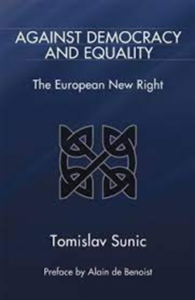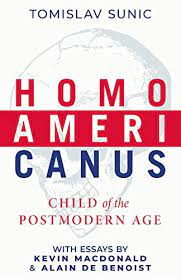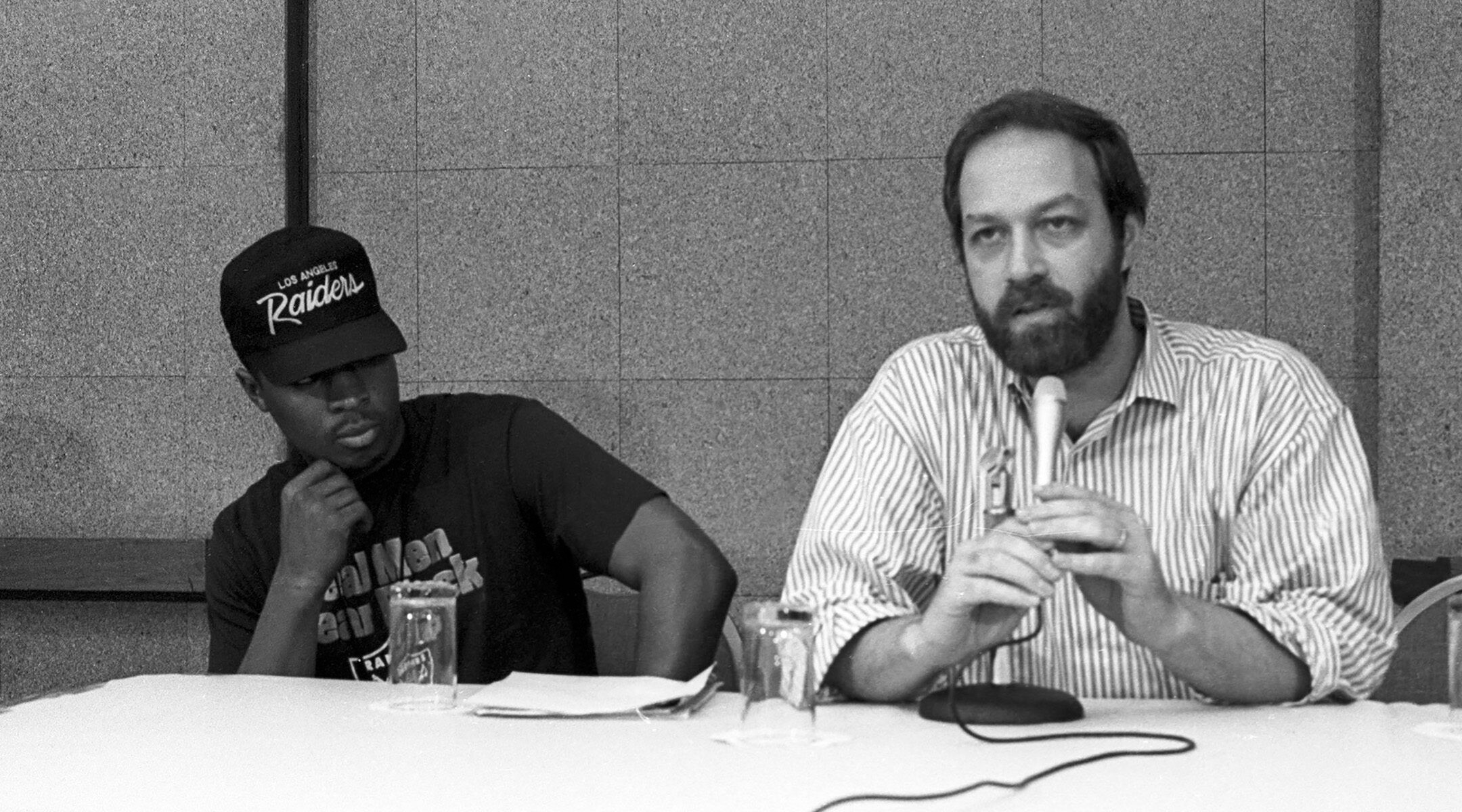Critical or laudatory writings about Jews seem to be an inexhaustible subject although it often turns into a repetitive rant. Over the last two thousand years tons of books and articles have been published either praising Jewish soul-improvers and their apostate apostles to the heavens, or describing their early Judaic brethren as the scum of the earth. Along with each historical surge in Jewish influence, there follows, as can be witnessed anew in the USA today, the inevitable upsurge in antisemitism – whatever this word means, or whomever this generic label with many meanings may apply to. Any objective account about Jews is a coincidentia oppositorum, or simply put, a conceptual tension resulting from the co-existence of two conditions which are opposite to each other, yet dependent on each other and presupposing each other. Objectively speaking every book and every remark in favor or against Jews depend on the self-avowed objectivity of a cited author. Carl Schmitt, a prominent German conservative legal scholar, now a household name for the Alt-Right and New Right in Europe and the US, shortly after the National-Socialist takeover, wrote in a chief German legal journal of that time:
The necessary task of bibliography is very difficult given that it is undoubtedly necessary that we determine as accurately as possible who is a Jew and who is not.[i]
However, the most important thing, coming to light these days, is the clear and definite understanding that Jewish opinions cannot be put on the same level in their intellectual content with the opinions of German or other non-Jewish authors. [ii]
In order to prevent any critical inquiry into the Jewish question, carried out by numerous German anthropologists, biologists, psychiatrists and legal scholars in Weimar Germany and later on in National-Socialist Germany (see here) many Jewish and many left-leaning authors, immediately after the end of WWII, began to inundate the educational and political markets with demonizing treaties not only about “ugly Nazis,” but also about the forever lurking White Gentile threat. One of the harshest critics of antisemitism, quite in line with the re-educational ukases of his coreligionists and coethnics of the newly reestablished Frankfurt School, wrote: “Judeophobia is a psychic aberration. As a psychic aberration it is hereditary, and as a disease transmitted for two thousand years it is incurable.” [iii] The prime purpose of the newly launched academic field of psychoanalysis, which later gave birth to critical race theory, and later on to a bizarre “French Theory” curriculum, was to pathologize Whites into perpetual feelings of guilt. It spread in the 1950’s like a wild fire, particularly in American colleges. Soon, the entire social science curriculum in the West turned into courses of demonology with labels such as “antisemite” and “Nazi” becoming the symbols of Absolute Evil. It follows that is impossible to converse with Absolute Evil. With humans labeled as extraterrestrial monsters or subterranean demons, one cannot negotiate; legal provisions of human rights cannot apply to species declared as non-humans beforehand. They need to be destroyed. Such a Manichean view, based on criminalization of the adversary, soon became the foundation of US foreign policy with its latest offshoot now being observed in the US demonizing attitude toward its former WWII Russian ally. Soviet-Russian soldiers, after their liberation of Auschwitz in January 27, 1945, were crucial in cementing the post-WWII liberal and communist antifascist narrative; today, by contrast, their Russian offspring must be excluded from the protections of international law.
Many Jews are well aware that works critical of their behavior, and especially works published by German scholars prior and during WWII, were not all, and not always, products of aberrant minds. Some of those works contain unsettling truths about Jews. Hence the reason that the first step initiated by the Allies in ravaged Europe, following WWII, was to destroy or make inaccessible thousands of books deemed to be dangerous to the establishment of the post-WWII world order.[iv] (see also here).
Early French communist and antifascist author Jean Paul Sartre, was among the first to provide the script for demonizing political adversaries, based more on his personal vendetta than on his true concern for French Jewry. As the German troops were preparing their retreat from France in the late summer of 1944, he drafted a short book in which he commiserated with the French Jewry, comparing their plight to the hero in the Franz Kafka’s novel The Trial, “who knows that he is considered guilty; judgment is continually put off — for a week, two weeks… [v] . Very likely Sartre rushed to publish this little Judeophile manifesto of his in order to better adjust himself to the spirt of the vindictive antifascist times in Europe, but also to distract his audience from the fact that in the early 1930’s he benefited from the scholarship in a nascent National-Socialist Germany. The pro-German Vichy government in France, from 1940–44, had never bothered him, leaving the performance of his dramas unscathed. This did not prevent Sartre, however, by the end of 1944, along with a bunch of his communist fellow travelers, and with the little help of American occupying powers, to launch a large-scale operation of intellectual inquisition against thousands of French anticommunist authors, artists and wrong-thinkers — the process to be known decades later in America under the name of cancel culture:
Of all professional categories, journalists and writers were hit the hardest. This underlines the ideological character of the conflict and the ensuing purges. The proportion of writers and journalists who were shot, imprisoned, and barred from their profession surpasses all other professional categories. Do we need to be reminded of the assassination of Albert Clément, Philippe Henriot, Robert Denoël, of the suicide of Drieu La Rochelle, of the death of Paul Allard in prison prior to court hearings and of the executions of Georges Suarez, Robert Brasillach, Jean Luchaire […] [or] the death sentence pronounced in absentia or a commuted prison sentence for Lucien Rebatet, Pierre-Antoine Cousteau, etc.?” [vi]
If one agrees for a minute that antisemitism is indeed a form of mental disorder necessitating the banishment of all antisemitic authors from the public domain, or having them dispatched to psychiatric wards, then one must just as well conclude that hundreds of books critical of Jews, from antiquity to modernity, also need a similar treatment in retrospect: from Tacitus to Treitschke, from Dickens to Dostoyevsky from Voltaire to Vacher de Lapouge. The alphabetical list of authors who have made critical remarks about Jews goes off to infinity.
The degree of antisemitism is difficult to gauge, only confirming time and again that this word has an extensive capacity for diverse meanings. There are latent antisemites who limit themselves to mild criticism of Israel in the hopes of avoiding public rebuke, and there are also those who use explicit and often gross words for the portrayal of Jews. There is a huge difference in antisemitic syntax between the well-mannered Catholic writer Hilaire Belloc and the folkish writer Louis Ferdinand Céline, who, other than writing his antisemitic pamphlets (still banned in France), is considered the best French novelist of the twentieth century. Belloc, by contrast, prefers pussyfooting around the Jewish question, using convoluted sentences devoid of hyperbolic Jew-baiting words, always watching nervously not to cross the line, while putting it diplomatically:
It has unfortunately now become a habit for so many generations, that it has almost passed into an instinct throughout the Jewish body, to rely upon the weapon of secrecy. Secret societies, a language kept as far as possible secret, the use of false names in order to hide secret movements, secret relations between various parts of the Jewish body…[vii]
Céline, by contrast, seems to be focused in his lengthy unhinged antisemitic prose way too often on Jewish anal tracts and Jewish genitals. In his peculiar lingo, often difficult to translate even into the crassest American slang, he notes:
The fucked up Masonic Republic, supposedly French is at the mercy of secret societies and Jewish Banks (Rothschild, Lazare, Barush etc…) it’s in agony. [viii]
Or even more:
The Kikes that rule the Universe, they understand them, those secrets of public opinion. Hidden in the corners, they have all of the wires in their hands. Propaganda, gold, advertising, radio, press, the cinema. From Hollywood the Jewess, to Moscow the Yid, same boutique, same telephone, same agencies, same Kikes manning the lookout, the cash drawer, the business affairs.[ix]
Rare are contemporary academics who would dare tackle critically, studiously, yet dispassionately, the most explosive taboo topic of our times: the Jewish question. For his groundbreaking work on Jews and their role in shaping academic and public discourse in the US Kevin MacDonald was bound to receive a kiss of death from his fellow American academics. The entire political communication after WWII throughout the West has been based on fake Gentile Judeophile mimicry on the one hand, and hidden Gentile resentment of the Jews on the other. A French author writing under pseudonym notes:
From 1945 onwards, there is no longer any Jewish question, antisemitism ceasing to be an opinion and becoming a criminal offence instead; it’s rare to find those daring to defy this taboo. [x]
Modern German politicians are a case in point. Over the last several decades the have not even pretended to engage in a make-believe Judeophile mimicry; their veneration of Jews is hyperreal, if not surreal, with the existence of the state of Israeli serving as Germany’s stated raison d’état. Every new German chancellor, when sworn in, forces himself/herself to embark on multiple pilgrimages to Tel Aviv where he or she states unambiguously, as the former Chancellor Angela Merkel did on several occasions, that “ Israel’s right to exist is the Germany’s reason of state”. [xi]
Jews as Gentile Doppelgangers
Atonement rituals of US and European politicians vis-á-vis Jews can be compared to faked citizenship behavior in the former communist Eastern Europe where critical comments about the communist ruling class could only be made in private and behind bolted doors. In a similar vein, the Jewish question today is critically discussed in America and Europe only in closely-knit circles of like-minded people. However much the so-called Western democracies like to brag on all frequencies about free speech and free academic inquiry, any critical comment about Jews must stay off limits. With any tiny critical remark on Jews, if uttered in public, either deadly silence sets in, or all hell breaks loose in the media. Censorship in communist states was surely well described by some sharp American observers; self-censorship, by contrast, which reigns supreme in academic and governmental circles in America and the EU, hasn’t as of today been critically examined.
Surely, the System, along with its friendly scribes is overjoyed when observing the proliferation of diverse antisemitic sects and multiple “White Power” or “Hollywood Nazi” cults, or internet Jew-baiters. There are two reasons for that: Firstly, self-declared Jew-haters are always welcome by the System given that they provide the System with necessary legal fodder further bolstering its worn-out mantra that “Western democracies extend free speech to all — even to their enemies.” And secondly, any hostile insult against Jews always comes in handy to the System’s thought police which can easily set up decoys and charge antisemitic suspects with having a master plan for a terrorist act against the Jews.
Another parallel is in order. Former communist apparatchiks in Eastern Europe used Marxist dialectics very adeptly. In the beginning of their bloody reign, dialectics was a tool to justify the physical destruction of their anticommunist critics. After the breakup of communism, they resorted to the same dialectics in order to rebrand themselves as Western liberals and exorcise themselves from accusations of having committed gigantic crimes in their recent communist past. Likewise, many Jewish scholars resort to similar dialectical invocations about “rising tide of anti-Semitism,” which serves them as a tool for further strengthening the national and racial identity of millions of Jews and lining the coffers of Jewish organizations. One could raise a rhetorical question: how long would Jewish identity thrive without generating its antithesis in the Absolute Evil incarnated nowadays in the so-called White Supremacist and his fellow traveler, the Antisemite? If one assumes that all antisemites in America and Europe simply vanished into thin air, the System would likely resuscitate and reconstruct a new brand of antisemites out of the blue. Just like the System in the ex-communist Soviet Union and Eastern Europe drew its negative legitimacy by constantly reinventing the boogeyman of counterrevolutionary Fascism and Nazism, so do many Jewish agencies and pro-Jewish lobbies in the US, along with countless left-leaning social science professors, build their identity, or better yet shield their tenure, by nurturing their evil household darling Hitler and by evoking the danger of his postmodern sidekicks, the proverbial “White Supremacist” and the “Neo-Nazi.”
In passing it must be stated over and over again that the pejorative word “Nazism”, although not legally banned in private communications, was never used officially in even one document in National-Socialist Germany. The term “Nazi” was first coined by early Spartacists, i.e., early German Moscow-steered Bolsheviks in Weimar Germany, later to be used massively in the Soviet Union, before it comfortably settled during the 1950s in American academic and media vernacular. Its derogatory equivalent would be “commie” for a communist, although not a single academic paper in the US or EU would accept a paper where a word “commie” is used as a synonym for a communist. In addition, the compound noun National-Socialism includes the noun ‘Socialism’, written with a capital S, a word which had a very good reputation among all nationalists all over German-friendly countries in Europe, prior and during WWII: from Germany to Spain, from Croatia to Finland.[xii] Soviets and their latter-day modern Western offspring, the antifas, also like to adorn themselves with the word “socialism” yet cannot tolerate that the “Nazis” could also be socialists. The two-syllable word “Nazi” sounds more demonic, hence more acceptable in the mainstream media.
In a similar vein, mainly due to the willful ignorance of the German language and German cultural history many modern self-proclaimed experts on National-Socialism refer to it as an “ideology.” Again, not a single National-Socialist government document, not a single academic paper in in Germany, from 1933-45 used the term Ideologie; the official name being Germany’s National-Socialist “Weltanschauung” (worldview). However, neither does the English word “worldview” reflect best the German word “Anschauung”, a word which has a nuanced philosophical meaning, carrying a notion of perception, imagination, figurative thinking, or pictorial apprehension. (see here)
One could also reverse the antisemitic Anschauung and pose another rhetorical question regarding the wishful thinking about the tentative disappearance of Jewish influence in the West. If Jews were suddenly to depart, as many White Christian antisemites secretly yearn – there would still remain countless of millions of US evangelicals, Christian-Zionists, millions of White traditional Catholics in Europe, all hoping in chorus to become themselves verus Israel, i.e., more Jewish than the Jews and thus await their turn for chosenness. Hating or loving Jews and Judaism, yet quoting every Sunday their scripts and bowing down to their jealous god Yahweh, is surely a form — if not of the White paranoid mind, then at least a serious form of White Gentile split identity.


Credo quia Absurdum (“I believe because it is absurd”)
Penile and anal analogies that many antisemites often resort to when describing the Jews were also trademarks of the chief Jewish psychoanalyst, Sigmund Freud. His obsession with Oedipus complex projected on his would-be incestuous and parricide gentile clients reflected very likely his own concealed sexual disorders. Nonetheless Freud deserves big credit when describing Christian antisemitism as a hidden “neurosis” in his best and last book Moses and Monotheism.[xiii]
The hatred for Judaism is at bottom hatred for Christianity, and it is not surprising that in the German National-Socialist revolution this close connection of the two monotheistic religions finds such clear expression in the hostile treatment of both.
It is no accident that the intellectual and cultural foundations of Fascism and National-Socialism can be traced to central Europe and northern Italy known historically for their strong Catholic traditions yet retaining strong pagan undercurrents which the Vatican willy-nilly had to put up with over centuries, at least until the Second Vatican Council in 1962–65. Many German scholars in the footsteps of Friedrich Nietzsche and sympathetic to early National Socialism wrote hundreds of articles and books linking Judeo-Christianity to the rise of early Bolshevism. “The Jewry, in its single-minded pursuit of the world domination through the Bolshevik deception of mankind, has had its strongest ally in the disruptive Biblical faith.”[xiv]
On the other hand it is also no accident that in WASP America Jews have had a far better proliferating turf than in Europe, while continuing to thrive with their overreaching zeal, especially in framing the modern American social-juridical narrative. As I wrote some time ago many Jewish scholars (J. Auerbach, M. Konvitz, J.L. Talmon) rightly acknowledged deep theological links between the American idea and Judaism. Many American traditional conservatives and White Nationalists may be correct in denouncing secular myths, such as Freudianism, Marxism and neo-liberalism, which they see as ideologies doctored up by Jewish and pro-Jewish writers and politicians. They fail, however, to go a step further and examine the Judaic origins of Christianity and the proximity of these two monotheist religions. Or to put it into a more up to date verbiage: How can one dismiss the self-evident Holocaust story yet at the same time embrace the self-evident story of the Jew Jesus Christ or the immaculate conception of the Jewess Virgin Mary? [xv]
Putting all Jews in one basket is also a serious error given that some of them have shown strong antisemitic feelings themselves, such as the so-called “self-hating” Jews. These Jewish antisemites have simply grouped together Jewish apostates who have critically addressed the Jewish monotheist mindset in all its religious or secular modalities. Arthur Trebitsch, Otto Weininger, Gilad Atzmon, let alone the modern Holocaust revisionist scholar, Gerard Menuhin, are just some of the Jewish names that are wisely avoided in social science studies, both in US and EU colleges today. Long ago a left-leaning French Jew Bernard Lazar, after publishing his classic, came under fire from both the left and the right for his criticism of his coethnicists:
The general causes of antisemitism have always resided in Israel itself, and not in those who antagonized it. This does not mean that justice was always on the side of Israel’s persecutors, or that they did not indulge in all the extremes born of hatred; it is merely asserted that the Jews were themselves, in part, at least, the cause of their own ills.[xvi]
It would be a waste of time trying to debate endlessly about the looks of Jesus Christ. Was his phenotype similar to that of Turco-Khazarian Bob Dylan, or to that of the Sephardic-Maghrebian Enrico Macias? Was he the son of God, or a son of a prostitute and her Gentile partner? The discussion about his heavenly or his racial origin will likely continue for another millennium. The true believer, however, always knows the right answer. Jesus certainly didn’t carry the facial features of a blond-haired Nordic superhero that we observe on crucifixes of all churches from Manila, Mexico or Munich, nor did he look like Jim Caviezel. Moreover, his historicity has been hotly and violently debated for over two thousand years by Christians and non-Christians alike. During the early Roman Empire his name was never mentioned anywhere in the works of Roman historians, except for the fact that the Roman high society and the educated Romans, until the beginning of second century AD considered Jews (Iudeai) and Christians (Chrestianos) as the one and the same sect. Therefore, the expression “Judeo-Christian” is by no means an oxymoron or a deliberate verbal corruption of a single religious denomination. Early evangelists were not Europeans; all early Christian scribes and missionaries were almost all of north African and Levantine origins, including Tertullian, Cyprian, Augustin, Origen. In his latest and thickest book, containing over one thousand pages and several thousand quotes from various often conflicting sources, Alain de Benoist writes:
In fact, Jesus never polemicized against Judaism, but rather within it. He never wanted to create a new religion, nor to establish a “Church”. At the most, he wanted to reform from within the Judean religion, this being his only objective.[xvii]
Neither has the Church, over the last decades, lagged behind in its Judeophile statements despite its own serious legacy of persecutions of Jews throughout history. One cannot forever deny one’s own founding myths.
On November 17, 1980, in Mainz, Pope John Paul II spoke of “the people of God of the Old Covenant who have never been revoked by God.” In June 2006, Benedict XVI recalled in his turn the “inseparable relationship which binds Christianity to the Jewish religion as to its eternally living and valid matrix”.[xviii]
De Benoist writes further:
In other words, at its very beginning, Judeo-Christianity was not a form of Christianity, but rather a form of Judaism. This is the reason why, rather than speaking of Judeo-Christianity, it would be far better to speak of Christian Judaism.[xix]
But at some point, twin brothers must seek for a divorce and violent wars — which became much later a mutual trademark of all Christians beliefs during the early and late medieval period in Europe. But first the Jewish founding father had to be removed.
The break-up between the “Jews” and the “Christians” was therefore part of a much longer process than previously thought, since it was only in the fourth century that the two systems definitively separated from each other. This was a decisive turning point, given that at this time, in 325 AD, the Council of Nicaea was held, and thereafter, in 380 AD, Christianity was declared by Theodosius the state religion. [xx]
However awful this may ring in the ears of many devout modern Christian anticommunists and many White Nationalists, Christ may qualify as an early paleo-Bolshevik of Antiquity and his apostles dubbed as early crypto-commissars. Christians and communists, after the lengthy process of secularization throughout the period of the Enlightenment did, however, turn into mortal enemies in the first half of the twentieth century. This was to be expected as both the Communist and the Christian preachers had vied differently for the salvation of their sheep. Their underlying, allegedly pacifying dogma, has remained however the same despite the usage of different signifiers respectively: multiracialism, multiculturalism, ecumenism, i.e., communism and globalism. Next to modern-day Antifa rabble rousers and various Jewish agencies, the US Conference of Catholic Bishops (USCCB), along with the German Bischofskonferenz (DBK) is today the most vocal spokesman for non-White migrations to the West, known by now under the name of the Great Replacement.
Notes:
[i] Carl Schmitt. „Die deutsche Rechtwissenschaft im Kampf gegen den jüdischen Geist“, Deutsche Juristen-Zeitung (München und Berlin: C.H Beck’sche Verlagsbuchhandlunog; vol.20/41, 1936), p.1194.
[ii] Ibid, p. 1196.
[iii] Rudolph M. Loewenstein, Christians and Jews; A Psychoanalytic Study (NY: International Universities Press, Inc., 1951), p. 15.
[iv] Liste der auszusondernden Literatur (Berlin: Zentralverlag, 1946).
[v] Jean Paul Sartre, Antisemite and Jew, trans. Georg J. Becker (1948 NY: Schocken books, 1976). p.63
[vi] Dominique Venner, Histoire de la Collaboration (Paris: Pygmalion, 200p), p. 515-516.
[vii] Hilaire Belloc, The Jews (London: Constable & Company, Ltd, 1922), p. 100.
[viii] Louis Ferdinand Céline, School for Corpses, transl. Szandoer Kuragin (First published in French in 1938). https://schoolforcorpses.wordpress.com/
[ix] L.F. Céline, Trifles for a Massacre, by Translator Anonymous (AAARGH, Publishing House, Internet, 2006), p. 37. (First published in French, 1937). https://aaargh.vho.org/fran/livres6/CELINEtrif.pdf
[x] Henry Boulade, “Petit inventaire de l’antisémitisme”, in Écrits de Paris, n° 656 (July 2003), pp. 29-37.
[xi] Thorsten Schmitz, „Das neue Israel“, Süddeutsche Zeitung, May 17, 2010.
[xii] Nikica Mihaljević, Ustaški put u socijalizam : U teoriji i praksi NDH : Zbirka rasprava i članaka nikad objavljenih poslije 1945. (Zagreb: Nakladnik: Naklada Pavičić, 2016).
[xiii] Sigmund Freud, transl. by K. Jones, Moses and Monotheism (London: Published by the Hogarth Press and the Institute of Psychoanalysis, 1939), p.148.
[xiv] Hans Hauptmann, Bolschewismus in der Bibel (A. Klein Verlag, Archiv Edition 1937), p.117-118.
[xv] T. Sunic, preface by K.MacDonald, Homo americanus; Child of the Postmodern Age (London; Arktos media, 2018), p. 120 and passim.
[xvi] Bernard Lazare, Antisemitism, Its History and Causes (New York; The International Library Publishing Co., 1903) p. 8.
[xvii] Alain de Benoist, L’Homme qui n’avait pas de père (Paris: Krisis, 2021), p. 44.
[xviii] Ibid., p. 55.
[xix] Ibid., p. 873.
[xx] Ibid., p. 933.









